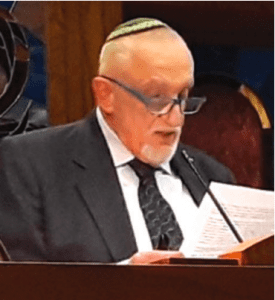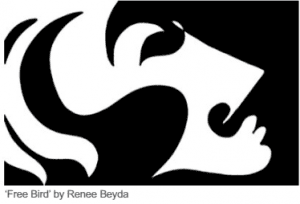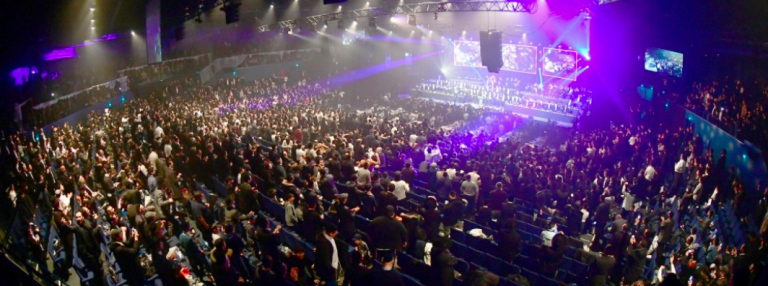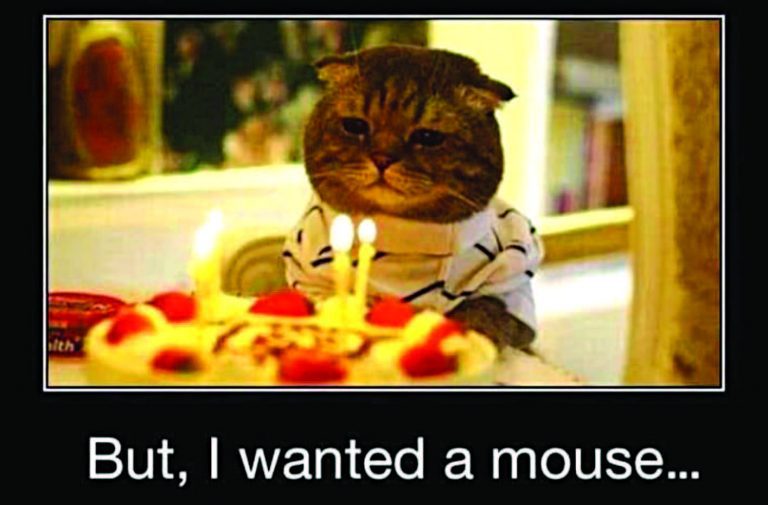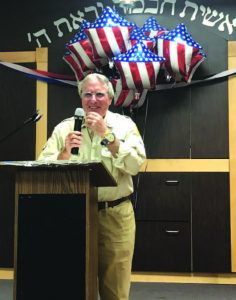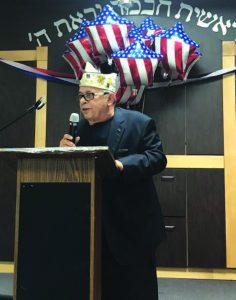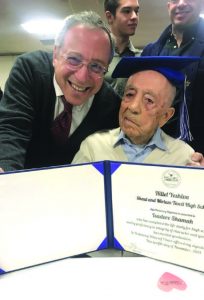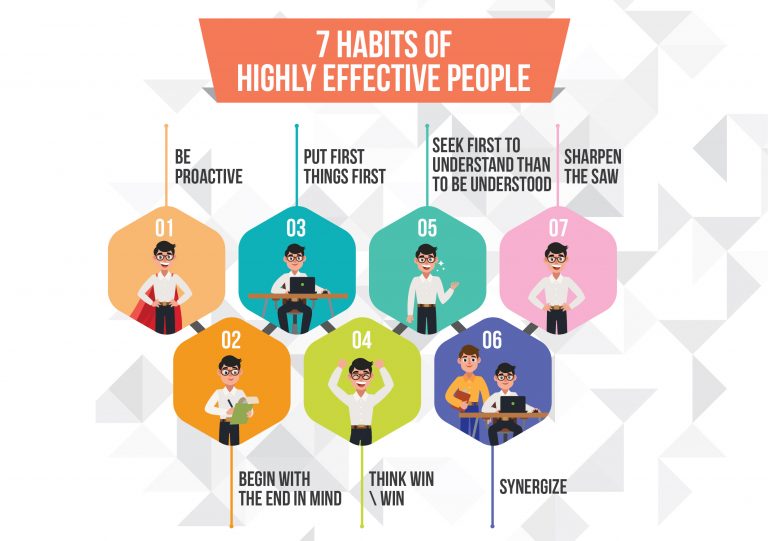Rabbi Nachman Seltzer
After a series of inspirational siyum celebrations held by the Dirshu organization in Jerusalem, Tel-Aviv, Manchester, and London – the next stop was Paris, which, on Sunday, January 12, saw the largest event ever celebrated by so many streams of France’s observant Jewish population.
Across the ocean, in North America, the events at Prudential, NJPAC, and Newark Symphony Hall lay ahead, as well as in South Africa and Belarus. It was a busy but exciting period for Dirshu – the international organization that runs numerous programs aimed at encouraging and fostering devoted Torah study and mastery of Talmud and halachah. Dirshu’s indefatigable Nasi, Rav Dovid Hofstedter, not only spoke at every event, but showed excitement at every gathering as if it were the first event of the “siyum season.”
“Thank You, Hashem!”
After an early-morning flight from Israel to Paris, I arrived at Dome De Paris with plenty of time remaining before the event began. The cavernous room was bustling, with the teenage helpers receiving their last-minute instructions, the band going through sound checks, and everyone involved in the production reviewing his part – all determined to ensure yet another beautiful kiddush Hashem, that the siyum in Paris would match the success of all the preceding Dirshu events, which all saw sellout crowds with thousands clamoring for entry when no more tickets were available.
I had the good fortunate of meeting a French rav, Rav David Zaoui ,a Lubavitcher shaliach in Paris, who graciously agreed to sit next to me throughout the event and serve as my translator. On my seat – just as on every other of the 4,000 seats in the hall – there was a bag containing Artscroll’s French edition of Masechet Berachot, the first tractate in the Talmud, as well as the brand-new commentary to Pirkeh Avot by Rav Hofstedter.
The event began with a series of videos featuring various distinguished rabbis and personalities delivering their heartfelt messages to the crowd. Rav David Pinto sent a video message from Israel stating that the siyum in Paris was an opportunity to say, “Thank You, Hashem. In our time we need people to strengthen us in limud haTorah [Torah study]!” Unlike all other mitzvot, Rav Pinto explained, Torah learning is very easy to neglect, because we can always tell ourselves, “I’ll do it later.” But thankfully, the Dirshu organization found an effective way to motivate and push people to learn, providing a wide range of structured programs and incentives to help students remained focused and committed.
“Who could have imagined that so many people would be making siyumim around the world!” Rav Pinto exclaimed. “What a zechut [privilege] it is to have Dirshu in France!”
As the orchestra played its opening medley, a group of yeshiva students jumped up from their seats and began to dance. Dancing this early in the event showed me two things: that a great afternoon lay ahead, and that the yeshiva students of France were very lively!
Moshe Roth, head of the orchestra, introduced Israeli singing sensation Meidad Tasa, who had flown in specially to join the French Siyum HaShas, and filled the hall with the beautiful song, “Ein Od Milvado” (“There is None Besides Him”). He then sang the timeless words of the Or Ha’haim (Rav Haim Ben-Attar, 1696-1743) describing how we must learn Torah “bimtikut va’arevut – with sweetness and pleasantness.”
Fulfilling Our Purpose
After a short introduction by the master of ceremonies, Rav Dovid Hofstedter and many of France’s leading rabbis ascended onto the stage and took their places on the dais as the music played and the crowd sang with great fervor.
Rav Shapira, Rosh Yeshivah of Epinay Sur Seine, was invited to recite a chapter of Tehillim. He first exhorted the crowd to develop within themselves the ratzon (desire) to complete the entire Talmud. The Rosh Yeshiva then announced, “This Tehillim is for all of us to develop that ratzon.”
A letter from Rav Gershon Edelstein was then read, stating:
Sometimes a person thinks he has plenty of time to do whatever he wants, but he needs to remember that he has to learn the entire Torah during his time here on earth! He should think to himself, “Do I know the entire Shas? I don’t have time to waste!” There is no extra time, and we have to learn every second! If you do that, what a happy life you will have… There are no excuses. Everyone has to set aside time to learn Torah!!
Rav Yitzchok Weil, shelit”a, Rosh Yeshivah of Aix les Bains, shared his reflections on the significance of the occasion: “There is no question that being here is a big merit for every person, showing Hashem that he is attaching himself to the tremendous kiddush Hashem happening right now!”
The Rosh Yeshivah then spoke about the special joy experienced by those who learn Daf Yomi: “When we learn the Daf HaYomi, we feel happiness, because we are intuitively experiencing the reason we have come here to this world. Suddenly, we feel that we are fulfilling our tachlis [purpose].” He added that the vision of Rav Meir Shapiro, who introduced the Daf Yomi concept nearly 100 years ago, is being realized, and is succeeding in its mission to unite all different types of Jews around the devoted and joyful study of Talmud.
Sticking to Your Schedule – No Matter What!!
Rav Shlomo Kanievsky, shelit”a, then read a letter from his father, Rav Chaim Kanievsky, shelit”a, emphasizing the importance of kevi’at ittim laTorah – designating time each day for Torah learning. Rav Chaim cited the Gemara’s teaching that one of the questions every person will be asked after departing this world is whether he had set aside time for study.
Rav Shlomo then proceeded to tell a story about a certain man in Bnei-Brak who would travel an hour each way to deliver a class to a small group of Jews in a community outside the city. One day, as the man prepared to leave, he saw that heavy rain was falling. He figured that with the inclement weather, very few people would attend his class, which to begin with was quite small. He decided to go to the Hazon Ish (Rav Avraham Yeshayah Karelitz, 1878-1953) and ask him whether it was worth going through the trouble of making the long trip on a stormy day to teach such a small handful of students.
“Tell me,” the Hazon Ish asked, “is there anyone who you know will definitely attend the shiur?”
“Yes,” the teacher replied. “The gabbai who opens the door will definitely come.”
The Hazon Ish told the man that if the gabbai would definitely come, then he needed to go teach his class.
He explained that when a person learns for an hour each day, that hour fundamentally changes the entire day. There is an enormous difference between a day with learning and a day without learning – and this made it worth taking a long trip in the rain to teach a single Jew, whose day would be transformed by listening to a shiur.
Rav Shlomo then told a story he had heard from his father, Rav Chaim, which he introduced by stating, “Everyone knows that my father doesn’t waste any time, and that he makes a siyum on the entire Torah every single year.”
Some 60 years ago, he related, when Rav Chaim was in his thirties, a yeshiva student asked Rav Chaim if he would learn with him for one hour every day. Rav Chaim agreed, but only on the condition that the boy would always arrive on time.
The boy replied that he was, in principle, committed to arriving on time each day, but every winter, he gets sick, and his illness endures for a full month. He could not commit to arriving when he was unwell.
“If you promise to come on time every single day,” Rav Chaim said, “ then I promise that you won’t get sick .”
The boy promised, and, sure enough, he did not get sick even once the entire winter.
Towards the end of the winter, a famous Hassidic Rebbe visited Israel, spending most of his time in Jerusalem. He planned a brief stop in Bnei-Brak – for the exact time when this student normally studied with Rav Chaim.
The boy, who was eager to see this Rebbe, asked Rav Chaim if they could reschedule their learning session.
“Absolutely not!” Rav Chaim replied. He explained that “kevi’at ittim laTorah,” setting aside time for learning, means setting a schedule and always sticking to it, come what may.
The boy explained that if they did not reschedule, then he would have to travel all the way to Jerusalem to see the Rebbe – instead of taking a five-minute walk to see him there in Bnei-Brak.
Still, Rav Chaim refused.
The boy, unable to resist, went to see the Rebbe at the expense of that day’s learning session with Rav Chaim. The next day, he became sick.
Rav Shlomo then told another story that happened during the time his father spent in the Lomza Yeshivah in Petach Tikva. His roommate, Rav Moshe Soloveitchik from Switzerland, was terribly distraught over the fact that so many Jewish children were being raised without a Torah education, and so he would go around knocking on doors, trying to convince parents to enroll their children in religious schools. He devoted so much time to this mission that on some nights he returned to the yeshivah at around 1-2am. Rav Moshe also learned Daf Yomi – which was not widely accepted back then.
One night, Rav Moshe returned to the yeshiva at 3am, and instead of going straight to bed, he opened his Gemara and began learning the Daf. He read a line and fell asleep; and then read another line and fell asleep again. Finally, at around 5am, his roommate, Rav Chaim, turned to him and asked, “Did you understand anything you just learned?”
“Nothing,” Rav Moshe replied. “Not a word. But although I didn’t understand anything I learned today, I will understand the next hundred pages that I learn. If I hadn’t learned today, then I would likely keep making excuses for missing other days, as well. That’s why I forced myself today to keep to my schedule even though I was falling asleep the entire time.”
Rav Shlomo concluded with a berachah that in seven-and-a-half years, at the next Siyum HaShas, the hall would be too small to accommodate all the Jews in Paris who had completed the Talmud.
“Come See What My Children are Doing!”
Rav Yehuda Toledano, Rosh Yeshivah of Mercaz HaTorah, announced to the crowd, “There is a big simchah in heaven right now.” At that moment, he said, Gd is saying to the angels, “Come see what My children are doing, and how they finished the entire Shas!!”
The reason for this special joy, the Rosh Yeshivah explained, is because Torah is the very purpose of creation. When Hashem sees how we are committed to realizing the world’s purpose, resisting so many pressures and temptations, He rejoices.
Rav Toledano then spoke of the special importance and power of Torah learning:
Through the waves of history, the Torah has served as our protection. It has led us through every generation and guided us through every situation. Our enemies may have succeeded in burning our sefarim [books], but the letters flew up into the sky where they waited for us to take them back into our lives. In today’s complicated world, there exists a unique island of serenity – an island of Torah that can be found in every place where we learn Torah. When a son sees his father learning and feels his joy, the son grasps that the Torah is our life force and the absolute center of our existence.
A Modern-Day “Na’aseh Venishma”
Rav Dovid Hofstedter, Nasi of Dirshu, was then introduced to speak. The young men in the crowd greeted him with the song, “Ashreh mi shegadol baTorah – Fortunate is he who is great in Torah.” They continued singing, not letting Rav Hofstedter speak, expressing their overflowing feelings of gratitude to Rav Dovid for all he has done for France’s Jewish community.
On two occasions during his speech, Rav Dovid spoke in French, an expression of deep respect for those who had gathered for this special event.
He cited the famous verse, “Torah tzivah lanu Moshe morashah kehilat Yaakov – Moshe commanded us the Torah, as an inheritance to the congregation of Yaakov,” and raised an important question regarding the concept of Torah being a morashah – an “inheritance”:
The Torah is our…inheritance. We didn’t need to buy it. It has always been ours. On the other hand, we find that it is written in Pirkeh Avot that we do need to work for it, and that it is not just a yerushah. This is a contradiction. Do we need to work for it or not? Is it our inheritance or not?
One answer, he explained, is that the Torah is an inheritance for the entire Jewish Nation, but not for individuals. We are promised that the Torah will never be forgotten from our nation, but every individual Jew must invest a great deal of work in order to acquire it.
But Rav Dovid then offered another answer to this question:
We see in the Torah that there are two ways of accepting Torah… The first is the way we stood at Mount Sinai and said, “Na’aseh venishma” [“We shall do and we shall listen”]. The second is the way we see when the nation complained that they didn’t have water… In an interesting turn of events, Klal Yisrael [the Jewish Nation] went and accepted Shabbat and parah adumah [the law of the red heifer used for purification]– taking mitzvot upon themselves without…preparing themselves… How could they do that? How could they accept additional mitzvot upon themselves without hachanah [preparation]?
The answer is simple: because mitzvot are our “water,” our air.
At Mount Sinai, when Klal Yisrael said, “Na’aseh venishma,” there was…preparation. So strong and effective was the hachanah, that the…people changed into…a new type of creation, proving that in order to change ourselves, we need to really work on ourselves. Only then will we become beneh Torah.
So yes, the Torah is our yerushah, our inheritance. But if we want to genuinely change ourselves, we need to work hard and to accept upon ourselves the yoke of Torah. We need the siyum, and we need the hachanah of Torah.
At the end of the speech, Rav Dovid asked the crowd a number of questions in French:
“Do you accept the yoke of Heaven upon you?”
“Yes!” the crowd unanimously and emphatically replied.
“Are you ready to learn Gemara every day?”
“Yes!”
“Do you think that our survival as a nation comes from the fact that we kept the Torah for so long?”
“Yes!!”
With this raucous, modern-day pronouncement of “Na’aseh venishma,” Rav Dovid concluded his speech.
“Ashrechem Talmideh Hachamim!!!”
Then came the emotional moment everyone had been waiting for – the siyum, the completion of the Talmud.
Rav Michoel Smerzla of Strasborg was honored with the reading of the final words of Talmud Bavli.
He began by reflecting, “Today we are finishing Shas, but the main thing is that we are starting again from the beginning.” Rav Smerzla expressed his fervent hope that the next Siyum HaShas would take place in the rebuilt city of Jerusalem.
The completion of the Talmud was followed by Rav Yitzchok Levy’s recitation of kaddish. The orchestra began playing, and the crowd erupted in exuberant dancing throughout the hall. The Jews of France joined hands and sang together on top of their lungs, “Ashreichem talmidei hachamim – How fortunate you are, O Torah scholars!” The mood was ecstatic. The Jewish community of France had just crossed the finish line. The Torah sages on the stage held hands and danced in their places. It felt as though SImhat Torah had descended upon the hall in the middle of the winter.
Finally, the crowd returned to their seats, and Rav Rafael Abuchatzeira was introduced to speak. He explained how we draw close to Gd through our study of His sacred Torah:
There is nothing more special in heaven than someone who sits and learns Torah. We all know about Mount Sinai and how we were chosen to receive the Torah. Moshe went up to the heavens, and the angels asked him what he was doing there. He explained that he had come to take the Torah, and that whoever possesses the Torah is in control of this world and the spiritual world above.
…We were given the Torah by Hashem – and since we so desired to draw close to the Shechinah [divine presence], the Shechinah wanted the same.
When a person learns Torah, the Shechinah learns…opposite him. It doesn’t say this about any other mitzvah – only when it comes to learning Torah. This shows us the importance of Torah learning in the eyes of Hashem.
Rav Mordechai Rottenberg was then honored with reading the opening words of the first tractate of the Talmud – Masechet Berachot. When he finished speaking, Rav Chamu recited “Shema Yisrael,” followed by the pronouncement, “Hashem Melech,” and finally, the prayer “Ana Hashem Hoshea Na.” All were repeated by the crowd.
The unforgettable event ended with more singing and dancing. Nobody wanted it to stop. Not the people who had come to spend time in the company of their Torah leaders, and not even the band or the singers who had come all the way from Israel to electrify the crowd. Ironically, they had come to inspire, but they left inspired themselves.
It was a truly uplifting afternoon and evening, a memory that I know will remain with me throughout the rest of my life, and one which, with little doubt, will have a profound impact upon French Jewry for years to come.
